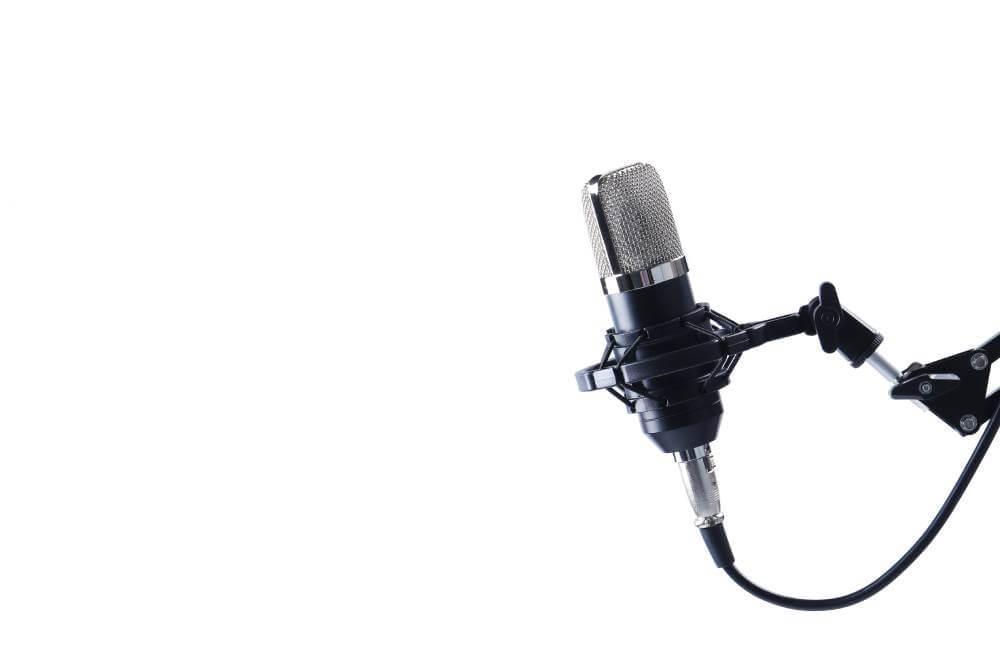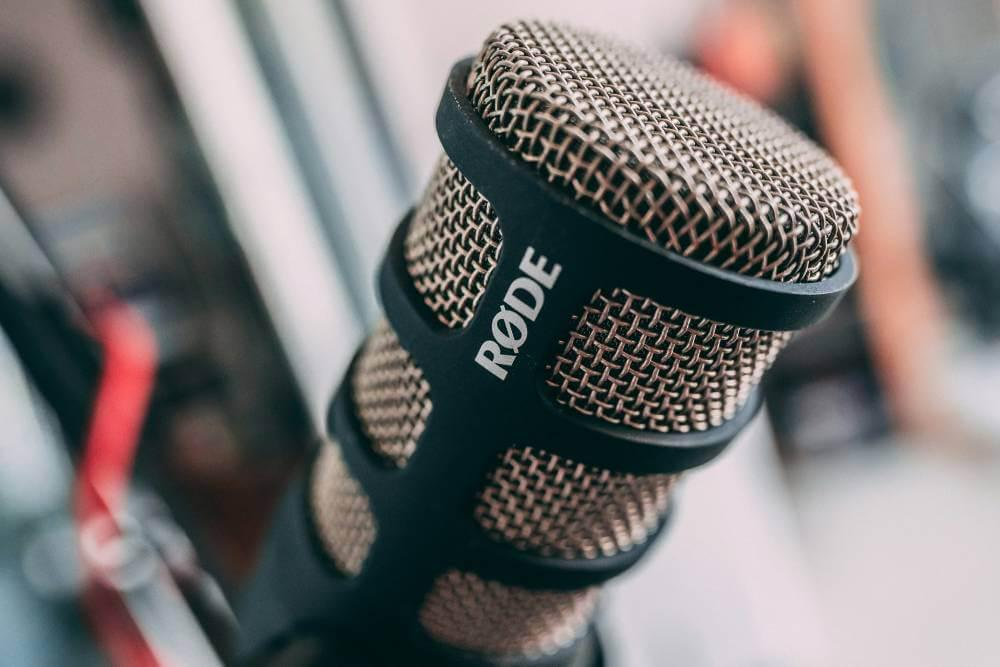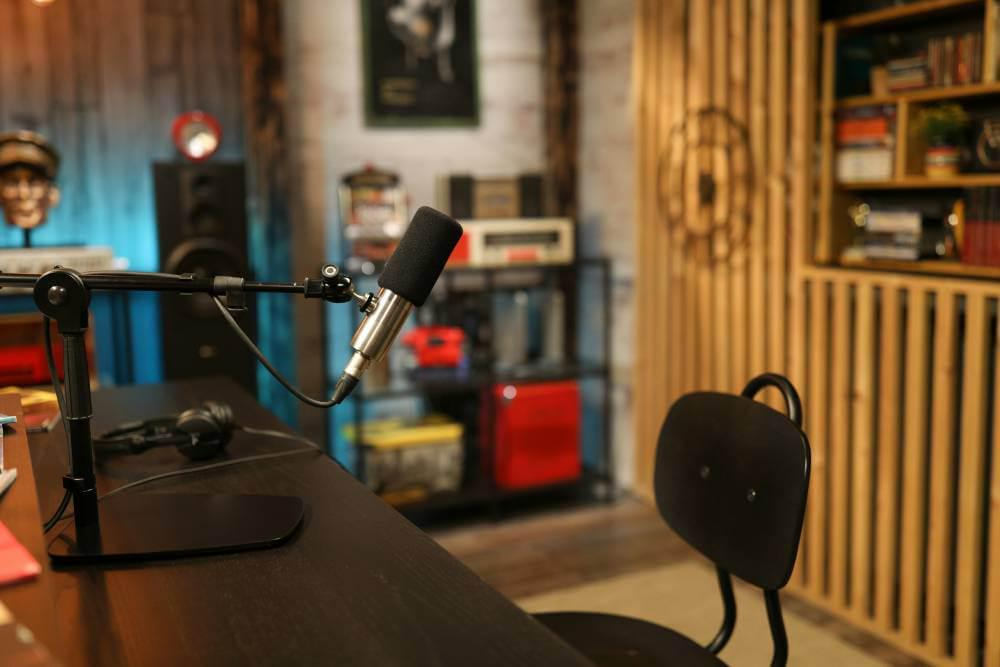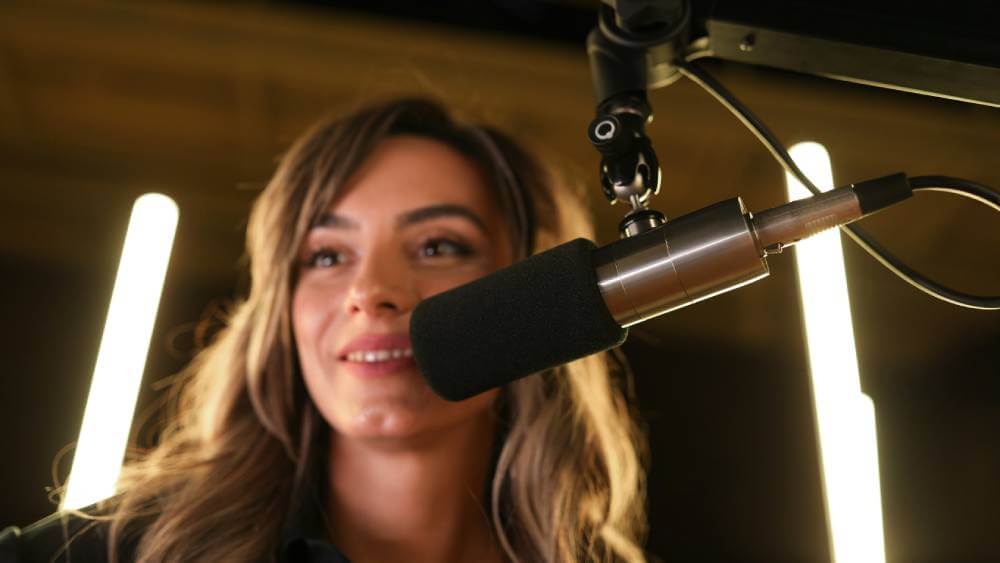When you’re recording on the go, having the right mobile microphone can make all the difference, whether you’re launching a podcast, live streaming, or just recording voice notes and interviews. These microphones are compatible with both Android phones and cell phones, ensuring versatility for all users. While the built-in mics on your phone are fine for casual use, dedicated mobile mics give you better sound and a more professional audio experience.
These little mics are perfect for content creators who want good audio without the hassle of big equipment. Whether you’re a blogger, YouTuber, musician, or podcaster, a good mobile mic will make your voice sound crisp and clear wherever you are. Many of them even come with charging cases, so your gear is always powered and ready to go, perfect for travel or outdoor shoots. Mobile phones are compatible with various types of microphones, enhancing their utility for video recording and audio quality.
Want to upgrade your audio? We’ve got a list of the best mobile microphones to take your recordings to the next level—whether you’re live streaming or preparing for your next episode. Our selection includes full microphone systems, wireless Lavalier mics, and more.
Lavalier Microphones: A Small Solution for Big Audio

Lavalier microphones, also known as lapel mics, have become a must-have for content creators looking for good audio in a small package. They’re small and discreet, so they’re perfect for all sorts of recording situations – whether you’re filming a YouTube video, interviewing someone, or presenting at a conference.
Lavalier Mic Benefits
One of the most significant benefits of Lavalier mics is that they can capture good audio while the speaker can move around. This is perfect for vloggers or TikTok creators who want to present naturally without being restricted by big equipment. Many modern Lavalier mics also come with wireless options, giving you more flexibility without the hassle of tangled cables.
Also, their small design allows for easy hiding, so they are perfect for situations where you want to look professional. Whether clipped to clothing or hidden under a costume, lavalier mics will get your audio out of the way yet effectively.
Lavalier Mic Considerations
While Lavalier microphones are super helpful, they do have some limitations. The biggest one is they only capture audio of the person wearing the mic. So, in multi-person conversations, only the audio of the person with the mic will be recorded clearly. To get balanced audio in group situations, you’ll need to get multiple microphones, which can increase your setup costs.
Budget Options
The good news is that the Lavalier mic market is very competitive, with many options at different price points. For those on a budget, the Boya BY-M1 is great value. Priced at just $14.95, it comes with a long cord and all the connectivity accessories you need, perfect for beginners or casual users.
Spend a Little More
While budget options are tempting, spending a bit more on a Lavalier microphone can pay off big time. More expensive ones usually come with better build quality, better sound, and extra features like windshields for outdoor use or built-in noise reduction. Brands like Rode and Sennheiser are known for their reliable Lavalier mics that deliver pro audio.
Best 3.5mm Phone Mic: Rode Lavalier II
When it comes to choosing the best 3.5mm microphone for mobile recording, the Rode Lavalier II is a top pick. This low-profile Lavalier microphone combines good sound with good looks, making it perfect for content creators on the go.
Sound
One of the Lavalier II’s best features is its sound. It captures good audio, perfect for interviews and vlogs. The design reduces handling noise, so your recordings will be professional even in dynamic situations.
Buildings and Accessories
Priced at $99, it’s in the sweet spot between budget and premium options. It comes with a rugged carrying case to protect the mic during transport and includes many accessories, like a windscreen for outdoor use. Perfect for both beginners and experienced users.
More Flexibility with Rode AI Micro
If you want more flexibility, the wireless Lavalier microphone Lavalier II can be paired with Rode’s AI Micro for an extra $79. This interface allows you to connect the mic to smartphones (iPhone and Android) and PCs and also supports a second microphone. Perfect for podcasters or interviewers who need to record multiple audio sources at once, it’s a simple way to upgrade your recording setup.
Best USB-C Phone Mic: Sennheiser Pro Audio Condenser Microphone, XS Lav USB-C
When it comes to a USB-C microphone for mobile recording, the Sennheiser Pro Audio Condenser Microphone, XS Lav USB-C, is a top pick. Priced at just $60, this Lavalier microphone has good sound and user-friendly features, so it’s a great investment for content creators.
Sound
One of the best features of the XS Lav USB-C is its sound. As a condenser microphone, it captures good detail and rich sound, perfect for recording podcasts, interviews, and video content. Whether you’re recording in a quiet studio or a busy environment, this mic will deliver clear and professional audio.
Direct USB-C Connection
One of the best features of the XS Lav is its direct USB-C connection, so you can plug it straight into your phone or laptop without the need for an adapter. This means no extra cost for a headphone adapter. With this setup, you can start recording with minimal hassle, so it’s perfect for on-the-go creators.
Long Cable
The XS Lav comes with a 2-meter cable, so you have plenty of length to move around or frame your shots during recording. This extra length allows you to position the mic exactly where you need it, whether you’re filming a video or interviewing someone. The length is great for those who like to keep a certain distance from the camera or the person they’re interviewing.
Build and Design
Sennheiser is known for its quality, and the XS Lav is no exception. The mic is built with durable materials so it can withstand daily use and is a great companion for content creators. The design is discreet, so you can clip it on your clothing without distracting your subject.
Wireless Microphones
In the world of mobile audio, wireless microphone systems have become very popular, offering freedom of movement and convenience to content creators. DJI’s Mic 2 system is a top pick among the many options available. It has many upgrades from the previous version, so it’s a great option if you want to upgrade your recording setup.
DJI Mic 2 Features
One of the most significant upgrades of the DJI Mic 2 is the ability to connect directly to your smartphone via Bluetooth. No more cables! Plus, the system has improved AI noise reduction, which filters out background noise so your voice is clear and crisp.
Another great feature is the larger screen, which provides an intuitive interface for settings and audio levels. This is perfect for dynamic recording situations where you need to make quick adjustments.
Adapters: TRRS vs TRS
As you get into mobile audio, one of the first obstacles you’ll encounter is the difference between TRRS and TRS connectors.
TRS Connectors: Also known as the classic headphone jack, TRS (Tip-Ring-Sleeve) connectors have two black bands and are for audio output.
TRRS Connectors: These have three black bands and are for headsets with built-in microphones, which can have both audio input and output.
For new creators, this can be a bit of a headache. Many traditional 3.5mm Lavalier microphones use TRS connectors, which won’t work when plugged directly into your smartphone’s headphone adapter. Some Lavalier mics may come with the adapter in the box, but it’s always good to be prepared and have a TRS to TRRS adapter handy.
Which Adapter to Choose?
If you have a TRS microphone and want to connect it to a TRRS input (like your phone), you need a TRS to TRRS adapter. Similarly, if you have a smartphone-specific mic with a TRRS connector and want to use it with other devices, like a DSLR, you’ll need a TRRS to TRS adapter.
Having the right adapters will allow you to get the most out of your microphone and record high-quality audio across multiple devices. By understanding these connectors and having the right accessories, you’ll be ready for any recording situation.
Shotgun Microphones

Shotgun microphones are a common sight when it comes to video recording, sitting on top of DSLR or mirrorless cameras. But their versatility goes beyond traditional filming setups, and they are great for mobile devices, including smartphones.
Directionality and Versatility
The biggest advantage of a shotgun mic is its directionality. It captures sound from the direction it is pointed at, minimizes background noise, and focuses on the audio source. This is useful for:
Podcasts: For clear dialogue even in noisy environments.
Recording Instruments: For isolating individual sounds in a band or ensemble.
Foley Sounds: For sound effects in film and video.
Lightweight and Portable
For mobile recordists, the lightweight design of shotgun microphones is a big plus. Many are small enough to fit in a backpack or laptop bag, so you can always have high-quality audio with you. This is especially useful for creators who move locations or work in dynamic environments.
Best Budget Shotgun Mic: Rode VideoMic GO II
The Rode VideoMic GO II is a fantastic budget shotgun microphone that punches above its weight. At $100, it surprises many users with its performance, rivaling desktop microphones that cost three times as much.
Great Sound
We tested the VideoMic GO II and were impressed with how good it sounded right out of the box. The mic captures audio with clarity and depth, making it great for vlogging, podcasting, and live sound at events. The directionality of the pickup pattern helps to focus on the sound source and minimizes background noise—perfect for mobile recording.
Easy to Use
Another great feature of the VideoMic GO II is its simplicity. It’s designed to be user-friendly so beginners and experienced creators can get professional-quality audio without complicated setups. It mounts to cameras and smartphones, so it’s flexible for any content creator.
Companion App for Customization
While the VideoMic GO II is great in standard mode, if you want more control, you can use a companion app to adjust settings. This allows you to customize to your specific recording needs, so it’s great for casual users and those who want to fine-tune their audio.
Best Phone Mic for Multi-Platform Creators

IK Multimedia iRig Stream Mic Pro
For creators who need a versatile and powerful audio solution, the IK Multimedia iRig Stream Mic Pro is the one. Often called an audio “Swiss Army Knife,” this chunky condenser mic has a range of features for different recording scenarios.
Multiple Connectivity
One of the biggest advantages of Stream Mic Pro is its connectivity options. It comes with Lightning and Type-C/Android cables in the box so you can connect to your smartphone, tablet, or laptop, making it an excellent choice among phone microphones for high-quality audio recording. This means you can use the mic across multiple platforms, whether you’re podcasting on the go, live streaming, or capturing high-quality audio for video.
Multiple Input Options
In addition to connecting directly to your mobile device, the iRig Stream Mic Pro has a 3.5mm input so that you can plug in instruments or additional microphones. This is great for musicians who want to capture live performances or podcasters who need to record multiple voices at once. The loopback mode even lets you blend background music from your phone or PC into your recordings for a better audio experience.
Multiple Polar Patterns
The mic has four selectable polar patterns, so it’s suitable for different recording scenarios. Whether you’re recording a solo singer, two people having a conversation, or ambient sound for a TikTok or Instagram video, the Stream Mic Pro has you covered. This means you can get the best sound quality, no matter the situation.
Not the Most Portable, But Highly Functional
While the Stream Mic Pro isn’t the most portable on the list, its versatility makes up for its size. For creators who value functionality and quality, this mic is a powerful tool for taking their audio to the next level.
Samson Technologies Q2U USB/XLR Dynamic Microphone
For those new to podcasting or desktop recording, the Samson Technologies Q2U is a great choice. Known for its quality-to-value performance, this dynamic mic is a favorite among podcasters and production companies. Let’s see what makes Q2U a great option for both beginners and experienced creators.
Multiple Connectivity
The Q2U excels with its dual connectivity options: USB and XLR. It doesn’t have Type-C, but USB is great for desktop use. You can connect the mic directly to your computer or mobile device with just a USB cable and an adapter. The XLR option gives you more flexibility to use it with professional audio interfaces or mixers if you decide to upgrade later.
Built to Last
One of the best things about the Q2U is its build quality. This mic is built to withstand travel, so it’s a great companion for creators on the go. You can throw it in a backpack, and it’ll be there whenever you need a reliable audio solution.
Multiple Use
The Q2U’s handheld design makes it even more versatile. It’s great for podcasting, singing, recording instruments, interviewing, and more. This flexibility makes it a great investment for anyone who needs a mic that can perform well in different recording situations.
Everything You Need
The Q2U comes as a complete recording package with a mic clip, desktop stand, windscreen, and all the necessary cables. This all-in-one package means you can set up and start recording immediately without buying extra accessories. Whether you’re setting up in your home studio or recording on the go, Q2U has everything you need to get started.
Tula Mics USB C Microphone
For mobile recording, the Tula Mics USB C Microphone is a great option for podcasts, Zoom calls, and home studio setups. You may not be familiar with the Tula brand, but this vintage-inspired mic has won the hearts of content creators who want both functionality and style.
Plug and Play
The Tula mic is great for connectivity. It connects to Android devices via USB Type-C and can be used with iPhones using a USB-C to Lightning cable or a USB “camera kit” adapter. This flexibility is perfect for creators who work across multiple platforms, whether you’re recording on your phone, tablet, or computer.
Multiple Use
What makes the Tula unique is its multiple-use design. It’s a desktop mic, a portable recorder, and even has Lavalier input. With 8GB of built-in storage, you can record high-quality audio without any extra devices. This makes it perfect for on-the-go content creation or for those who want a simple setup at home.
Noise Reduction
The Tula really shines in noisy environments. Its noise cancellation technology minimizes background noise, so your voice is clear and focused. This is great for podcasting, interviewing, or any situation where clarity is key.
Portability and Battery Life
The Tula mic is designed to be portable. It’s light and easy to carry, so it’s perfect for creators who need to record on the go. With up to 12 hours of battery life, you can trust the Tula for long recording sessions, whether you’re at home or in the field. Its flip stand makes it even more convenient for setup and stable recording.
Cables: A Guide to USB Mic Connections
Connecting USB mics to smartphones can be more complicated than just plugging in one cable. While progress is being made, the challenges still exist, especially across different platforms.
Android: Generally Easier but Variable
Android devices are generally easier to connect to USB mics. However, the many manufacturers and software versions mean compatibility is not guaranteed. You may find some mics work perfectly while others require adapters or troubleshooting. Always check user reviews or forums for information specific to your device.
iPhone: The Compatibility Issue
Connecting USB mics to iPhones is a whole different ball game. While many USB mics can work with the USB Camera Adapter, it can feel a bit clunky. Some USB-C to Lightning cables will connect mics, but many won’t, including Apple’s own. This inconsistency can be frustrating, especially during time-sensitive recordings.
One confirmed option that works is the Fiio USB-C to Lightning cable and a few generic ones. These cables are cheap and can charge your phone, so they’re a good addition to your audio toolkit. If you work with audio frequently, it’s a good idea to keep a couple of these cables around to avoid last-minute connectivity issues.
Best Phone Mic for Musicians on the Go: Audigo

For musicians looking for a portable solution to capture their sound, Audigo is the way to go. Launched in 2019, this brand is dedicated to serving artists and performers, and its only mic reflects that. If you value portability and ease of use, Audigo might be the perfect fit for you.
Compact Design
The Audigo mic has a unique puck shape, making it super pocketable. This is a big plus for musicians who want a reliable mic without bulk. Whether you’re at a café, in a park, or just hanging out at home, you can carry the Audigo and whip it out whenever inspiration strikes.
Multitrack Recording Made Simple
One of the best features of the Audigo is its ability to connect multiple devices for multitrack recording. This is super useful for musicians who want to layer their sound without the hassle of a complicated setup. Just sync up your devices and record your tracks, and you’re good to go.
Built-in Editing
Once you’ve recorded your tracks, the Audigo app allows you to fine-tune your sound. You can add reverb and delay, EQ your recordings, and even polish your audio before exporting to your preferred platform. So, Audigo is not just a recording device but a complete audio solution for musicians on the go.
Video Mode for Social Media
Audigo knows how important social media is in today’s music scene, so they included a video mode in their app. This allows you to create content for TikTok and Instagram directly from your recordings so you can share your musical journey with your followers.
Limitations
While Audigo has features for musicians, it requires the companion app to function, which is currently only for iOS users. This app dependency might not be ideal for everyone, especially those who prefer standalone devices. Also, the lack of USB functionality limits its versatility compared to other recording solutions.
Best Phone Mic for Journalists and Field Recording: CEntrance MicPort Pro 3
For professional audio recording in the field, the CEntrance MicPort Pro 3 is the way to go for journalists and content creators. With the rise of USB-C in devices like the iPhone 15, the mobile recording landscape has changed. The MicPort Pro is designed to work with any professional mic, so it’s a versatile tool for capturing high-quality audio on the go.
Pro-Level Compatibility
The MicPort Pro has an XLR-combo connection, so you can connect any broadcast standard mic, like the Shure SM7B or Electro-Voice RE20. This is a big plus for journalists who need high-quality sound for interviews and field recordings. The interface also supports mics requiring phantom power, so you can use your favorite mics without compromise.
Great Audio Quality
One of the MicPort Pro’s best features is its low self-noise, so you can record without the hiss often found in cheaper interfaces. This is especially important for field recording, where clarity is key. The device is built to handle various environments, so it’s good for quiet interviews and busy street recording.
Long Battery Life and USB-C Charging
CEntrance thought of everything when they designed the MicPort Pro. It has a built-in battery that lasts around five hours, so you can use it for extended periods in the field. If you run out of power, you can recharge it while still using it with its USB-C charging. So you can stay connected and keep recording without interruption.
Features
Real-Time Monitoring: You can listen to your recordings as you go to ensure the best audio quality.
High-Pass Filter: To reduce wind and handling noise for outdoor recording.
Limiter: To protect your recordings from loud surprises so you don’t compromise your audio quality.
Dual Purpose
The MicPort Pro is designed for mobile use and as a simple audio interface for your home studio. Once you’re back in the office, you can switch to a desktop setup to seamlessly integrate with your existing workflow.
Best Cheap Phone Mic for Field Recording: Shure MVX2U
For budget mobile recording, the Shure MVX2U is a good option for field recording. Although it’s an XLR to USB interface that’s not officially supported for phone use, many users have connected it to various smartphones, including the latest iPhone 15 and several Android devices.
Cheap and Effective
Priced lower than the high-end CEntrance MicPort Pro 3, the MVX2U is great value if you want to upgrade your recording quality without breaking the bank. It’s compact, so it’s easy to add to your mobile recording kit so you can capture great audio on the go.
Compatibility and Connectivity
One of the best things about the MVX2U is its flexibility. You can connect professional XLR microphones to your smartphone to use high-quality mics you already own. Although it’s not officially supported for mobile use, many users have reported it works, so it’s a practical solution for budget-conscious creators.
Caveats
While the Shure MVX2U is a great value, it has some limitations. One of the biggest issues is that any settings changes must be made through the Shure desktop app. So, if you need to make changes in the field, you won’t be able to do so. Make sure to set your preferred settings before you head out so you can have a smooth recording experience.

